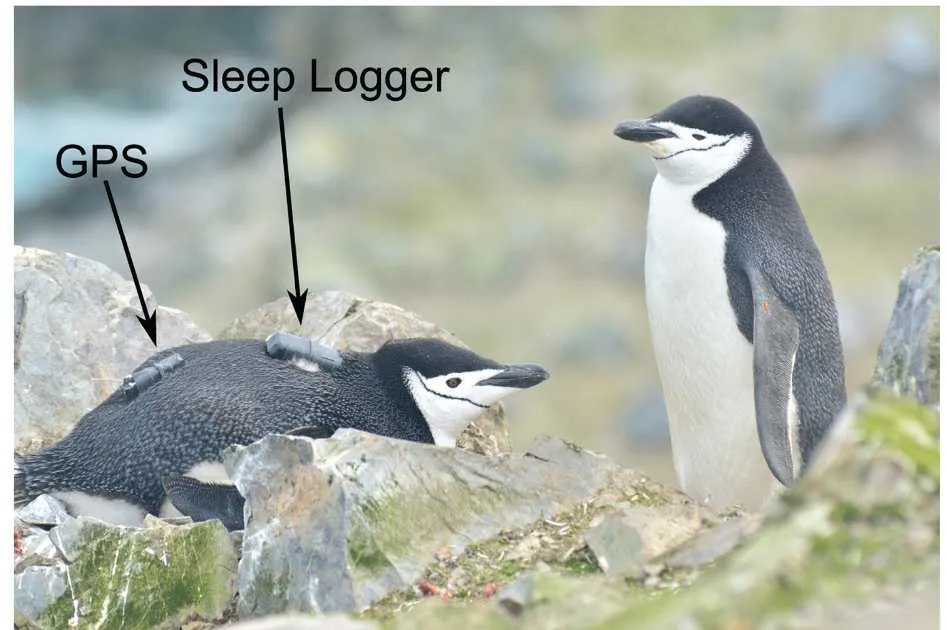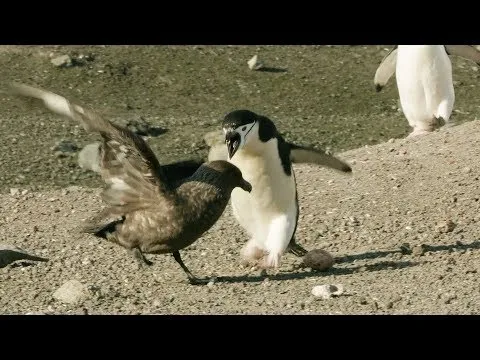Everyone likes taking a nap during the day... But how about ten thousand naps?!
Impossible as it may sound, there's actually one animal that pulls it off according to a new research paper describing how chinstrap penguins (Pygoscelis antarcticus) accrue sufficient amounts of sleep through thousands and thousands of seconds-long microsleeps during the day!
As the authors note, a quick microsleep could be dangerous to humans when let's say... driving...
Microsleeps, the seconds-long interruptions of wakefulness by eye closure and sleep-related brain activity, are dangerous when driving and might be too short to provide the restorative functions of sleep
But it may be a beneficial strategy in an other context...Like if you are a male penguin protecting your eggs or youngs from the never stopping attacks from predators..As long as those mini naps do fullfil the need for sleep:
If microsleeps do fulfill sleep functions, then animals faced with a continuous need for vigilance might resort to this sleep strategy. We investigated electroencephalographically defined sleep in wild chinstrap penguins, at sea and while nesting in Antarctica, constantly exposed to an egg predator and aggression from other penguins.

Penguin equipped with sleep and GPS loggers mounted on the back source.
What they found was remarkable! Apparently the penguins dozed off over 10 thousand times a day, for an average of 4 seconds...Meaning they spent almost half the day asleep in total.. Yet kinda awake if you think of it:
The penguins nodded off >10,000 times per day, engaging in bouts of bihemispheric and unihemispheric slow-wave sleep lasting on average only 4 seconds, but resulting in the accumulation of >11 hours of sleep for each hemisphere.
The researchers studied 14 wild chinstrap penguins who were incubating eggs, in a colony exposed to a predatory bird known as the brown skua (Stercorarius antarcticus) on King George Island, Antarctica, in December 2019. Below is a random video I found featuring those eternal enemies in action:
The microsleep behavior described above was found to be necessary for keeping predators and competing penguins away, while their penguin partner was away to forage for food.
The paper had an unexpected finding as well. The penguins in the border of the colony seemed to take longer and more full-filing minisleeps, despite being in more danger. One theory for that is that the center is more "noisy", e.g. from penguins moving around
Consequently, contrary to predictions based on mallards (10), birds nesting at the colony border slept better (more, deeper, and less fragmented sleep) than those nesting in the center
As the paper explains, these microsleeps would probably be detrimental to most species but thanks to evolution these penguins seem to have it cracked down.. And perhaps a few other species as well, where constant vigilance is of outmost importance for their survival :)
If microsleeps are more than failed attempts to initiate sleep and do fulfill sleep functions, then relying on microsleeps might be an adaptive strategy under ecological circumstances that require constant vigilance.
Anyways really interesting paper showcasing a really interesting behavior. Just click the link below if you fancy to read more on it :)
References & Further Reading
More Strange Animal Stuff
If you enjoyed this post here are some more amazing creatures to check out:

